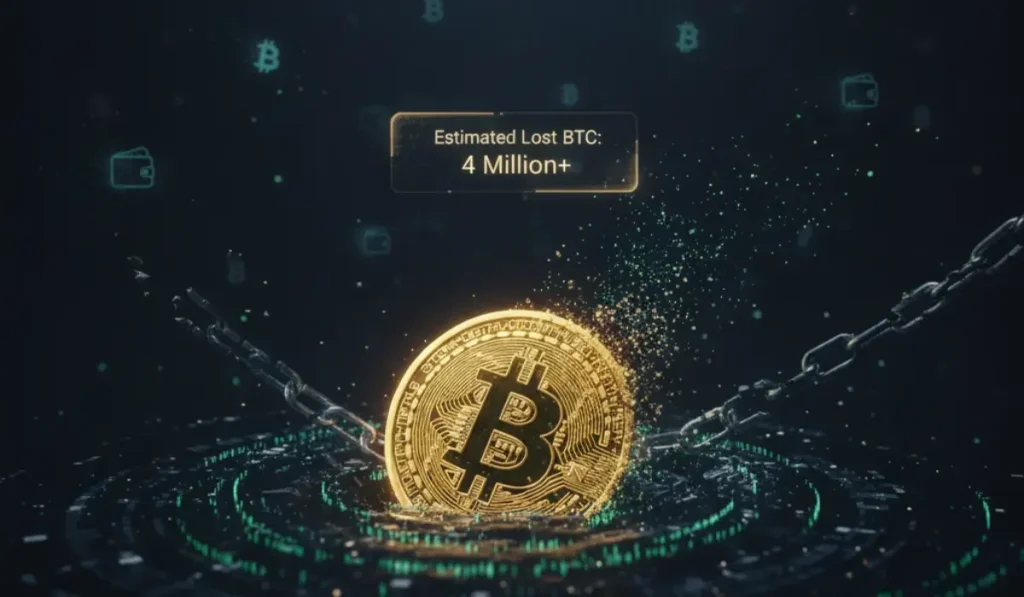How Many Bitcoins Are Left for Mining in 2025?

The total number of Bitcoins that can be mined is capped at 21 million, and as of 2025, approximately 19.8 to 19.9 million BTC have been mined. That leaves about 1.3 to 1.5 million BTC yet to be mined. The fact that after it reaches its mining limit, no more BTC can be mined could be confusing to many, as opposed to traditional fiat currency, which a country can print on demand. Why is there a limit to BTC mining? How does it affect the general public and the miners, and what happens after all of it is mined? These are questions that will be answered here. Let’s dive into it.
Why Is There A Limit To BTC Mining?
There will be only 21 million BTC ever produced, and this cap is hard-coded into the protocol governing the Bitcoin blockchain network. This fixed limit is one among the major factors that gives it the scarcity, and thus the title “Digital Gold”. The value of any form of currency is directly proportional to its demand and inversely proportional to its supply. The scarcer it is, the more valuable it is. The fact that Bitcoin has demand and no one can copy or reproduce another Bitcoin adds value to it, along with other factors.
How Many Bitcoins Are Left To Be Mined?
There are about 1.3 to 1.5 million BTC yet to be mined, according to credible sources. Now, one must wonder why it is still not mined yet; it’s been 15 years since Bitcoin was launched. There is still BTC left to be mined because of ‘Halving’. Bitcoin’s Halving Mechanism cuts down the reward to half for every block mined. This happens every four years, or for every 210,000 blocks mined. So far, it has been four times, and because of this mechanism, the mining is expected to continue till the year 2140. This was built on purpose to increase demand and induce scarcity, driving Bitcoin’s value up. The last halving happened in 2024, and the block reward was dropped to 3.125 BTC per block from 6.25 BTC.
What Happens To Lost Bitcoins?

Lost and inaccessible Bitcoins remain the same. Bitcoin, once lost, is lost forever; there is no means to recover it. It’s important to remember private keys; there are several million BTC believed to be lost because of lost private keys, wallets, and burned addresses. Even though there are about 19.8 to 19.9 million BTCs mined, not all of it is in the circulating supply. These lost BTCs actually add to the scarcity and demand, and are considered good. There are no options to hack into these wallets and recover the lost coins; they will remain in the network unused. It is one of the downsides of a decentralized platform; no bank is responsible for your locked-up funds, and the user is solely responsible for the safekeeping.
What Happens After All 21 Million BTCs Are Mined?

Miners will take another hundred and fifteen years to complete the Bitcoin network. The computational power required to create a block increases with every halving, and the reward gets halved, which slows down the mining. Once all of the BTCs are mined, there will no longer be mining rewards; instead, they will receive transaction fees from users for securing and validating the network. Since it will take another 100 years for the last BTC to come out, it makes Bitcoin an asset that’s worth holding on to, rather than one that could be spent, just like gold. Even though the rewards are halved every 4 years, the scarcity would increase the value of the BTC, making it still worth to mine. Once the rewards completely vanish, miners will depend heavily on transaction fees.
Conclusion
Around 93 to 95 percent of the total Bitcoin is already money, and most of it is in the circulating supply. There will only be 21 million BTC ever minted, and with each 210,000 blocks minted, the reward will be cut in half for miners. In 2009, when Bitcoin was first released, it was 50 BTC, and it will keep getting halved till 2140, when it will be completely mined. This cap on the total supply and halving mechanism will keep the value of BTC up by inducing scarcity. There are about 1.3 to 1.5 million BTCs yet to be mined. Lost coins due to forgotten passwords and lost wallets will remain lost in the network. An estimated 4 million BTC is lost in the network, inaccessible, but considered good in increasing the value by limiting the coins in supply. The miners will have to solely depend on the transaction charges for rewards after all of the Bitcoins are mined. Bitcoin is considered Digital Gold for the value it produces, and it’s still not too late for users to invest in it.
Also Read: 5 Most Controversial Crypto Airdrops Ever
Crypto & Blockchain Expert
